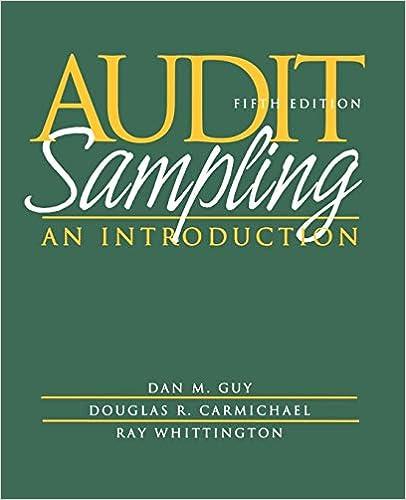Question
Q1. Short Answer How is a partnership formation different from a business acquisition when considering the valuation of goodwill? The following base data will be
Q1. Short Answer How is a partnership formation different from a business acquisition when considering the valuation of goodwill?
The following base data will be used to demonstrate the accounting for the formation of a partnership.

It is clear what each partner is bringing (in terms of net assets) into the partnership. Still, the information above must be supplemented with information normally found in a written partnership agreement before the accounting for the initial formation can be completed.
Assume the following are excerpts from the Useh, Kileen and Stewart partnership agreement.
1. Each partner will, upon initial formation, own an equal (1/3) capital interest position in the partnership.
2. Monthly salary allowance of $3,000 dollars each will be awarded to partners Useh and
Kileen.
Note- The salary allowance is not cash received but rather an allowance for work performed at the business. Partners receive benefit from the allowance when income is allocated at year-end.
3. Each partner will be allocated income that is equal to 20% of their respective capital interest (capital balances at year-end before income allocation).
4. Remaining partnership income (after accounting for salary allowance and payment for 20% of their respective capital interest) is allocated evenly or 1/3 each.
Q2. Short Answer What accounting rule dictates the above partnership agreement details? Based on the above information the accounting for the formation of the partnership would be as follows:

Now assume that the base data is identical with the exception of item #3 in the partnership agreement excerpts. The current excerpt states, The Bonus Method of accounting will be applied for partnership formation. The revised #3 states the following:
3. The Goodwill Method of accounting will be applied for partnership formation. The goodwill should be valued at $150,000.

The formation of a partnership is straightforward in terms of the accounting entries (above). There are several other basic accounting entries that need to be understood to account for basic activity during the year.
Partner Cash Withdrawal - An event that often takes place is partner cash withdrawal. If a partner makes cash withdrawals (takes cash out of the partnership) it is accounted for using a partner drawing account. Each partner will have their own drawing account as it is critical to keep individual detailed records of each partners activities, particularly when it comes to their capital position.
The drawing account is a temporary account that must be closed at year-end. The drawing account is closed against that particular partners capital account. Continuing with the partners in the above example, assume that Partner Useh took a withdrawal in the amount of $10,000 from the partnership. The accounting for $10,000 withdrawal would be as follows:


Step by Step Solution
There are 3 Steps involved in it
Step: 1

Get Instant Access to Expert-Tailored Solutions
See step-by-step solutions with expert insights and AI powered tools for academic success
Step: 2

Step: 3

Ace Your Homework with AI
Get the answers you need in no time with our AI-driven, step-by-step assistance
Get Started


